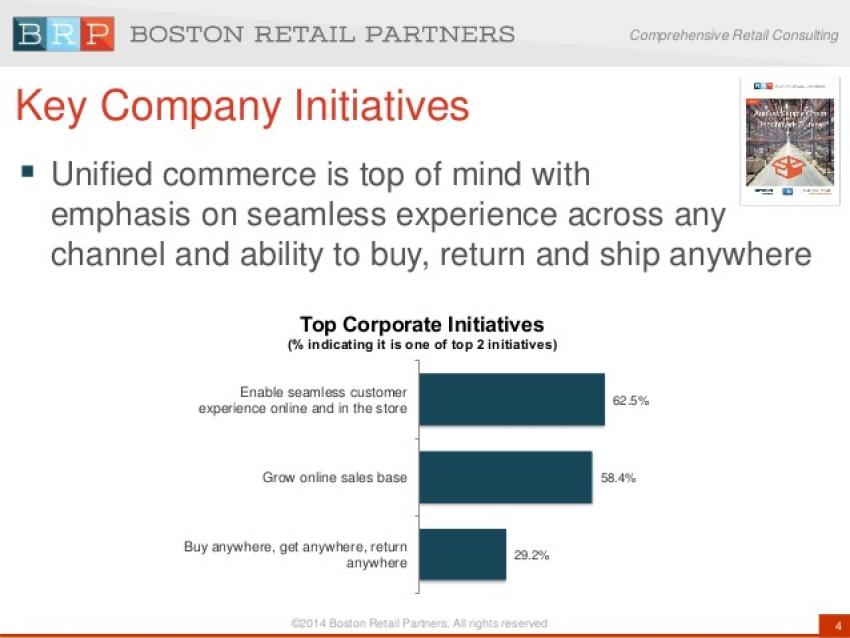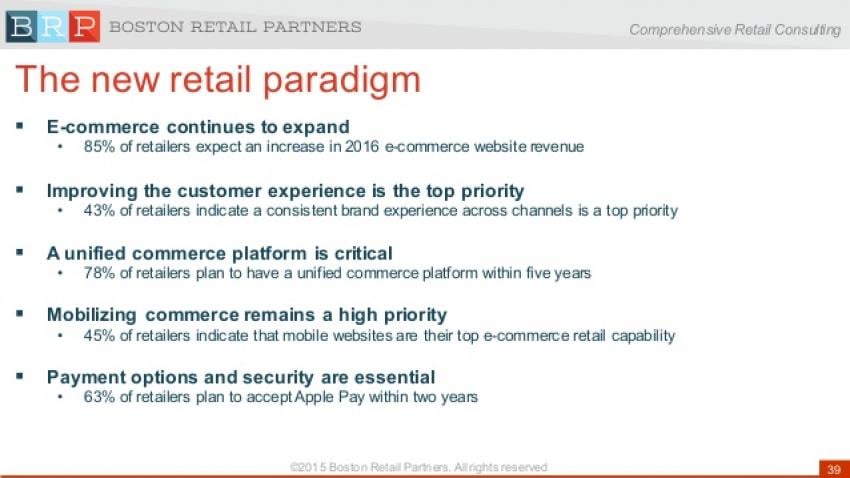Unified Commerce is a Top Priority for Retailers
- March 1, 2016
- By Todd Whitesel
- Marketing

Keeping customers content is a constant challenge faced by all retailers. To varying degrees, businesses establish and practice protocols that help distinguish them from the competition and help strengthen their brand. These efforts may include everything from requiring employees to don standardized uniforms to memorizing a script when greeting a customer in-person or on the telephone. And then there is the tone. Some retailers are conservative while others are more boisterous.
Regardless of the approach, consumers are increasingly calling the shots and making the rules to which retailers must abide if they want a piece of the gigantic e-commerce pie. In one study, eMarketer projected 2015 e-commerce sales at $349.1 billion. Of that total, nearly $80 billion was projected to come from holiday sales in November and December.
Consumers have the power to create brand awareness (good, neutral and bad) for retailers who exceed, fulfill or fall short of their expectations. They want -- and expect -- clear, consistent shopping experiences across all channels. If the brick-and-mortar doesn't match the online experience, they might take their business elsewhere to a retailer that delivers the goods across all channels. It doesn't take much to turn a potential lifelong customer into a one-and-done shopper. That's why so many digital retailers are working to create a unified system across all channels. This ideal is called unified commerce.
Unified commerce connects all retail channels in real time, from web to mobile to brick-and-mortar retail. Such unification provides a better and more consistent customer and brand experience. Bottom line: Unified commerce optimizes the consumer experience. Retailers who understand their customers and give them what they want can gain a marked advantage not just in sales but perception and continuing business.
According to a survey conducted by Boston Retail Partners, Manhattan Associates, Aptos, Demandware, Omnico and UTC, 85% of North American retailers affirmed that unified commerce was among their top priorities in 2016.
And in a SlideShare Webinar from October 2015 titled The Present & Future of Unified Commerce, Boston Retail Partners noted that 43% of retailers are making unified commerce a priority. Retailers are also looking to complement these efforts by providing a better user experience, investing in more robust commerce platforms as well as boosting website traffic and fulfillment options.


Providing a consistent customer experience requires a multi-faceted approach that integrates social media, website, mobile, point-of-sales platforms into real-time retail. Boston Retail Partners calls unified commerce, "the new retail paradigm." What are your plans to compete in this new paradigm?

Editor’s Note: With a presence in more than 35,000 retail locations, Realtree knows a thing or two about supporting and enhancing sales efforts. Get in touch with us today to learn more about the many retail-growth opportunities we offer.
